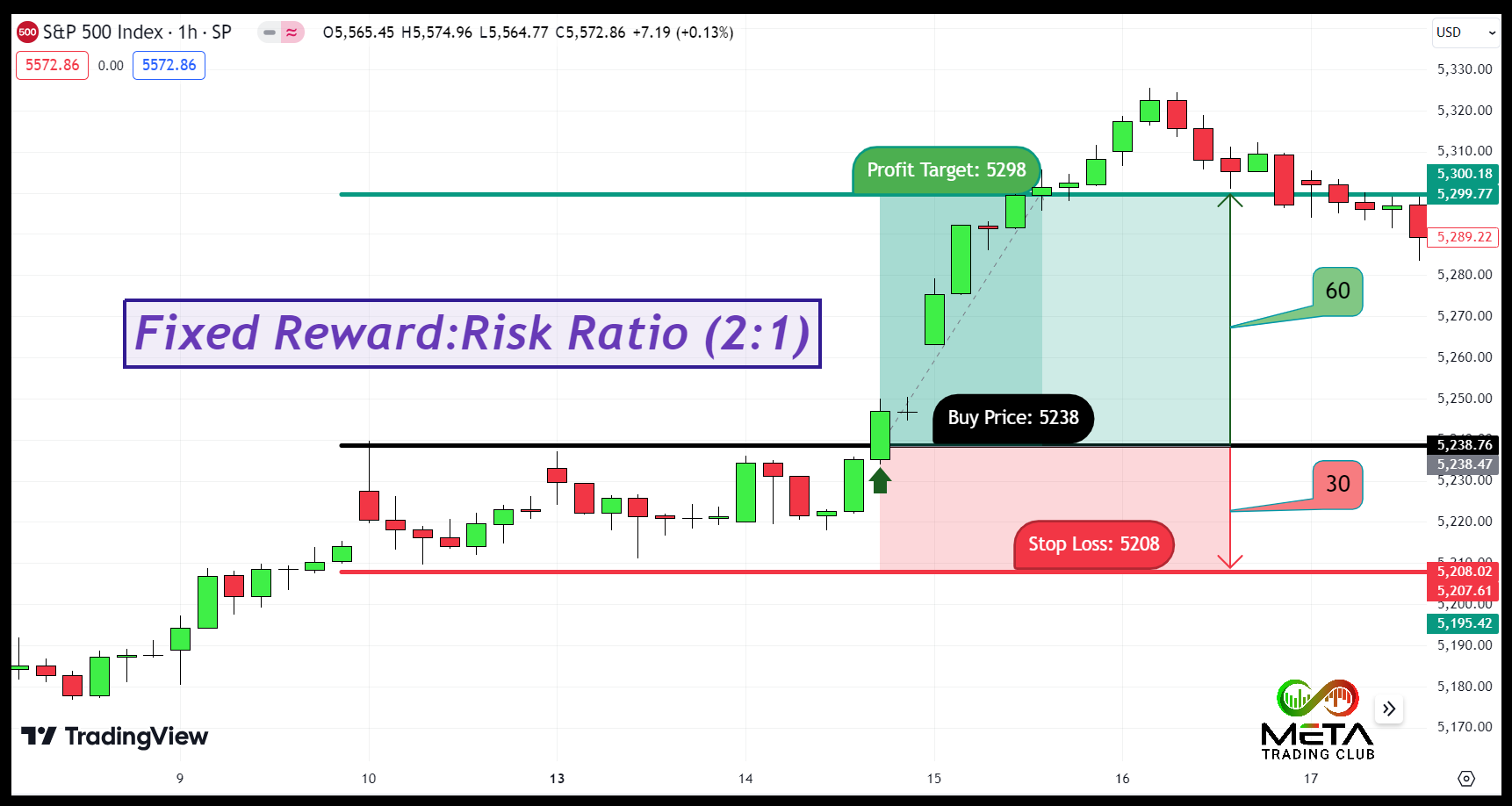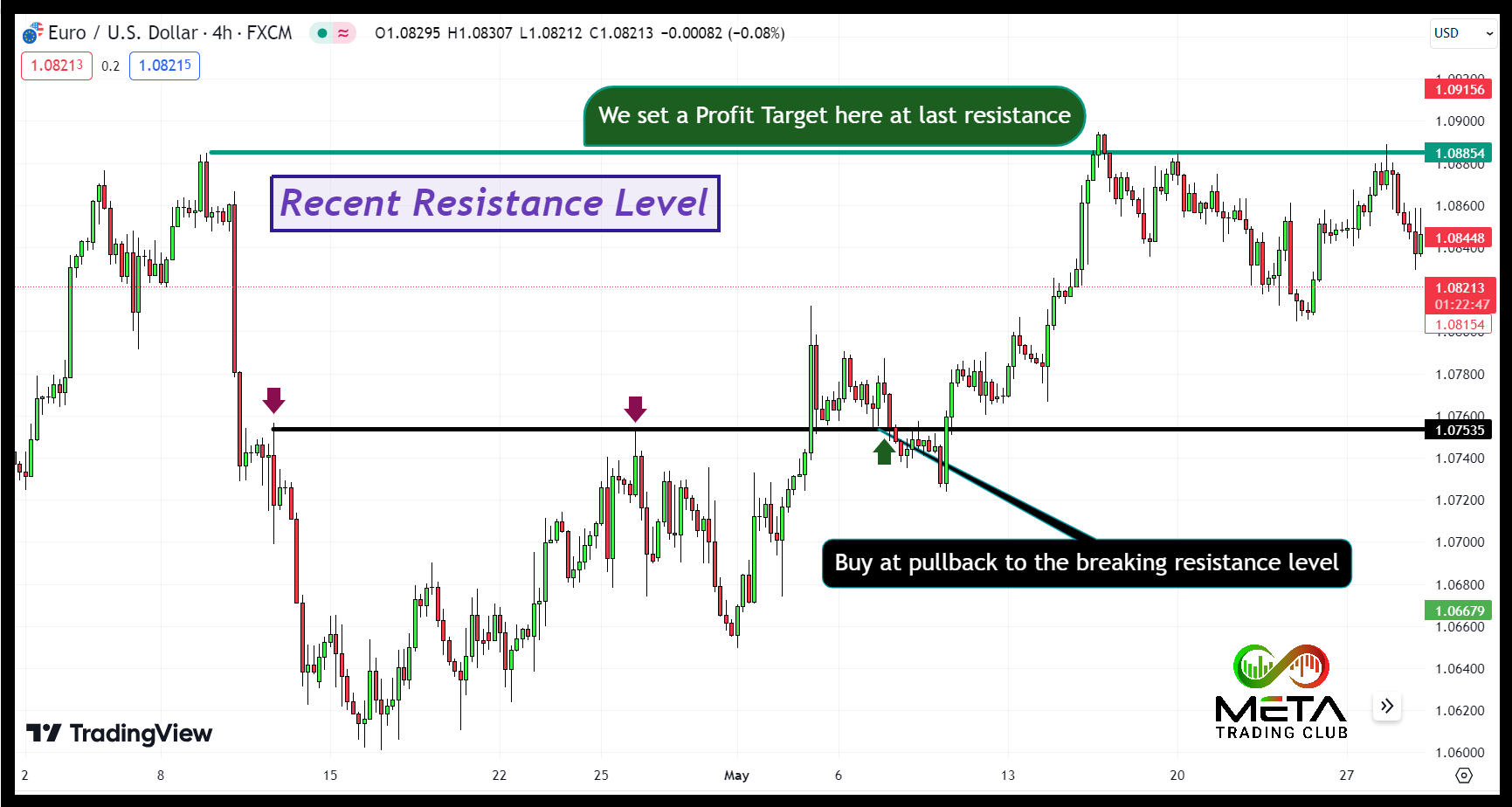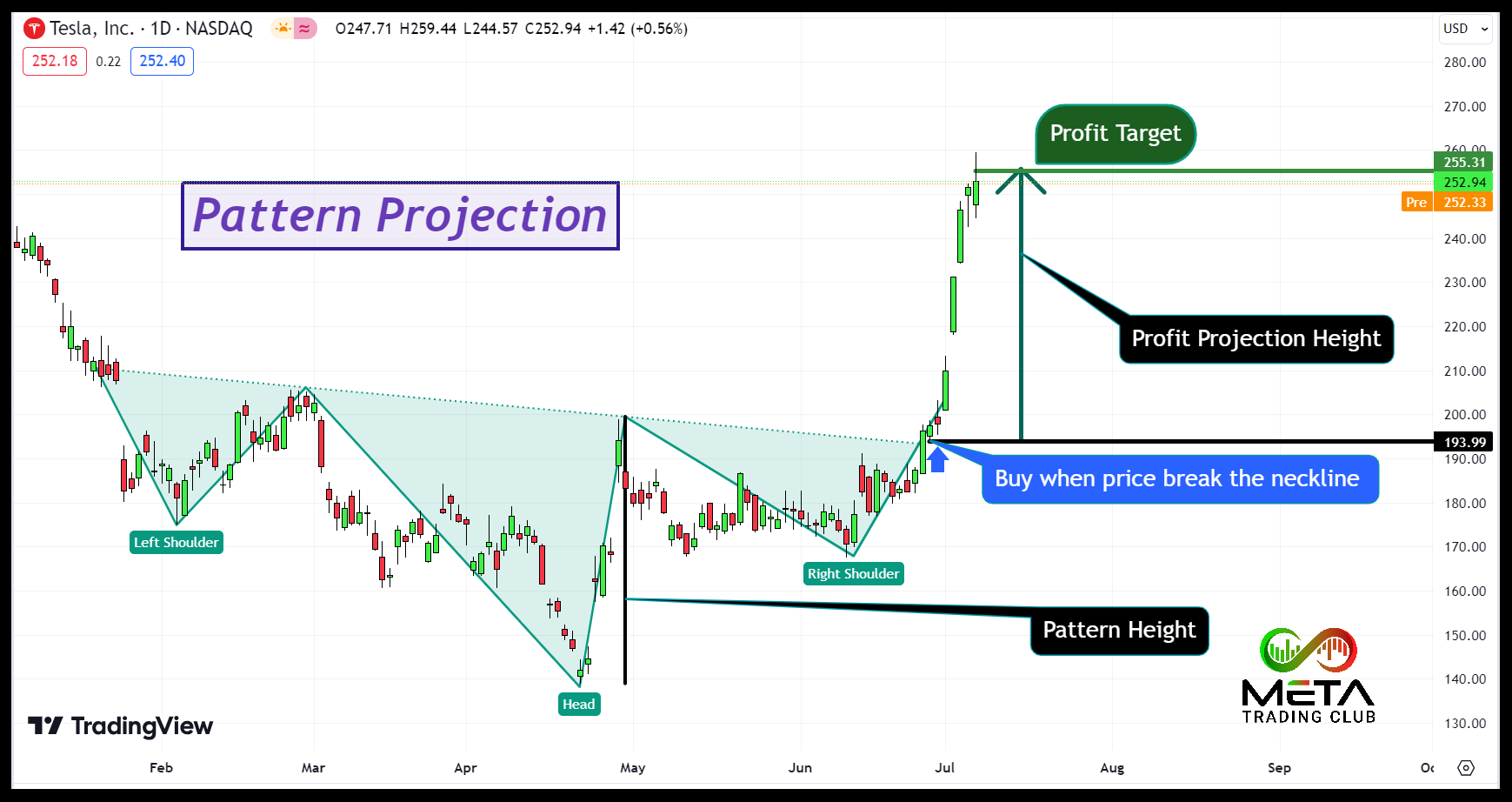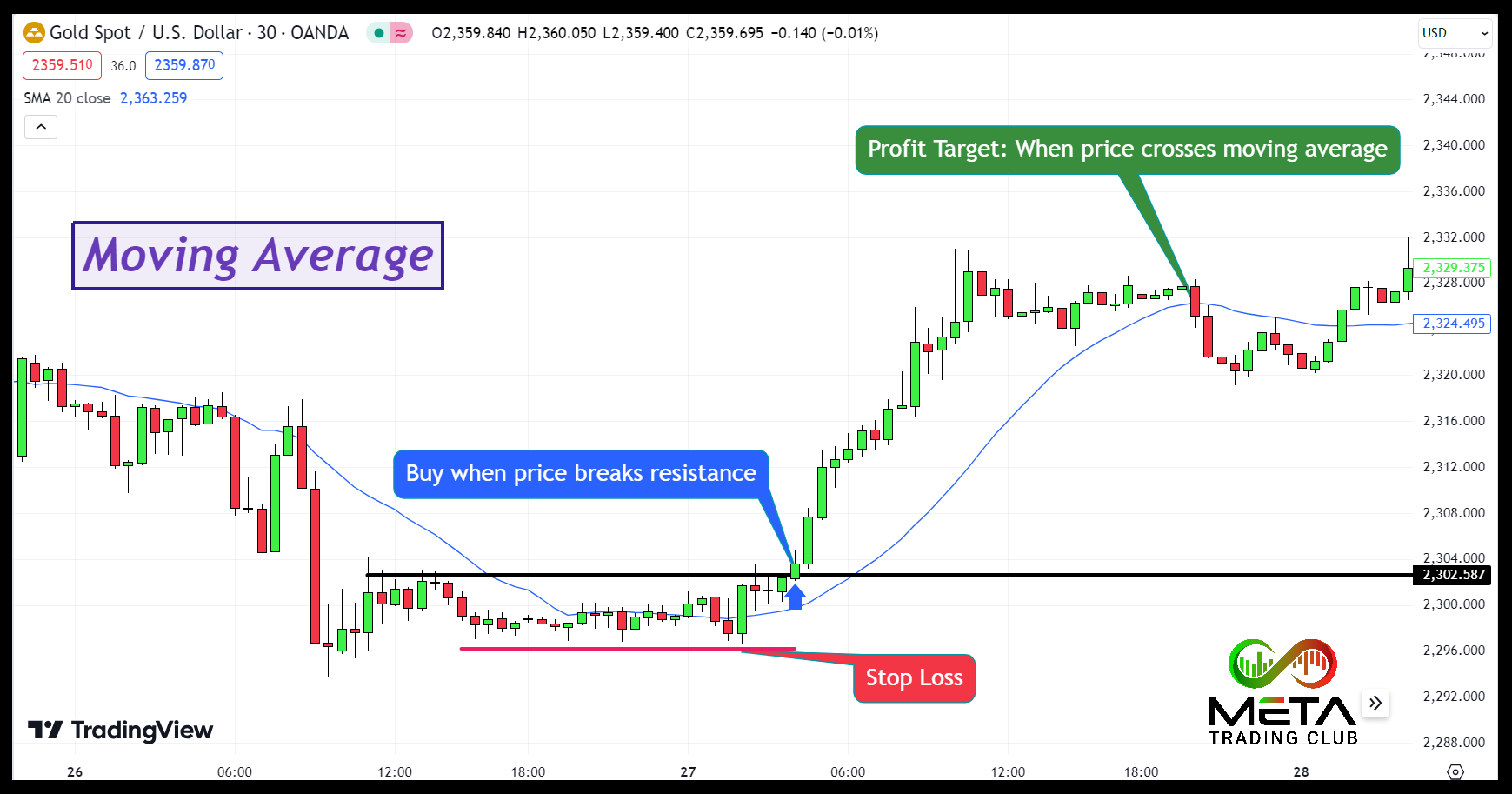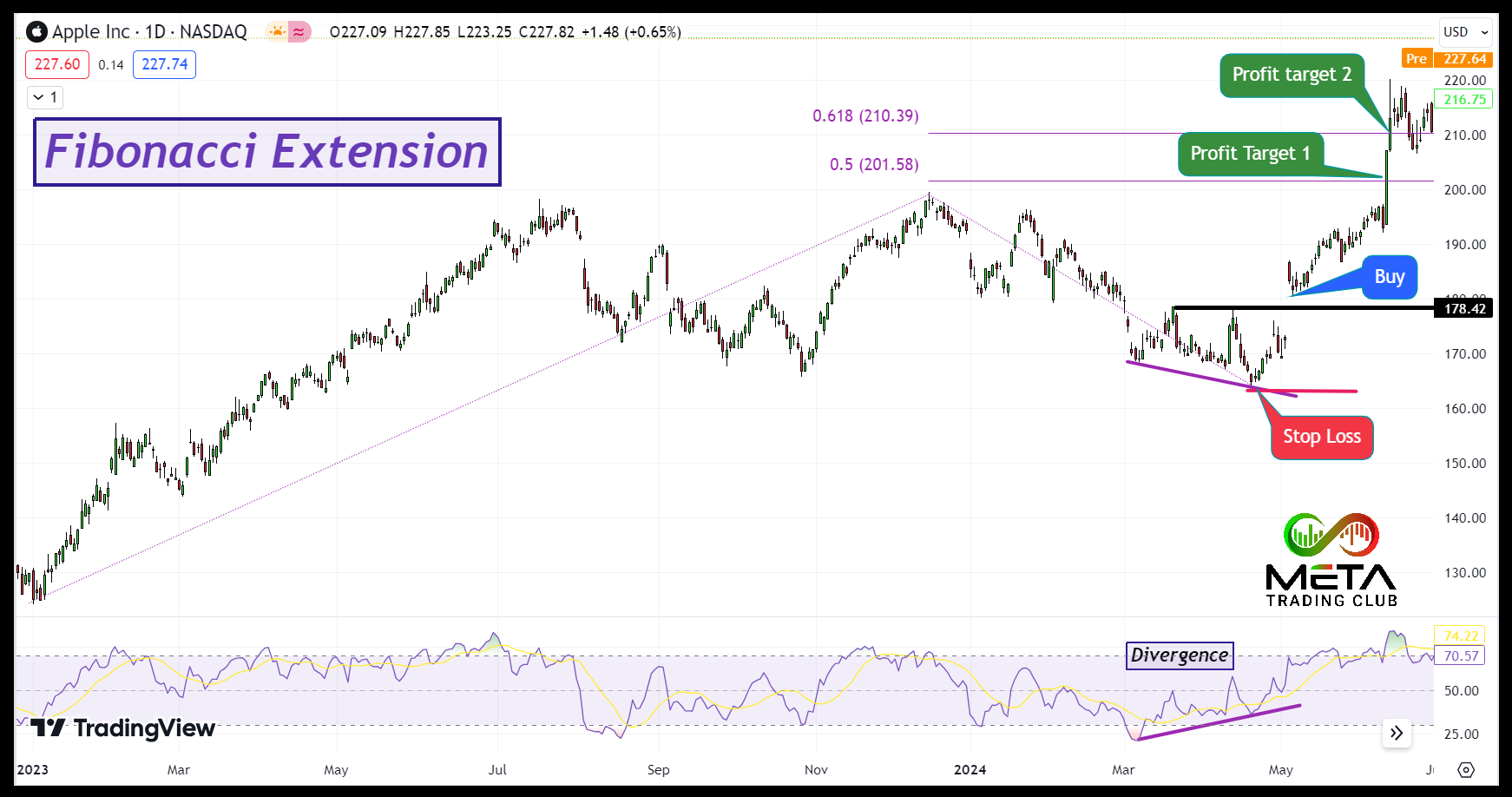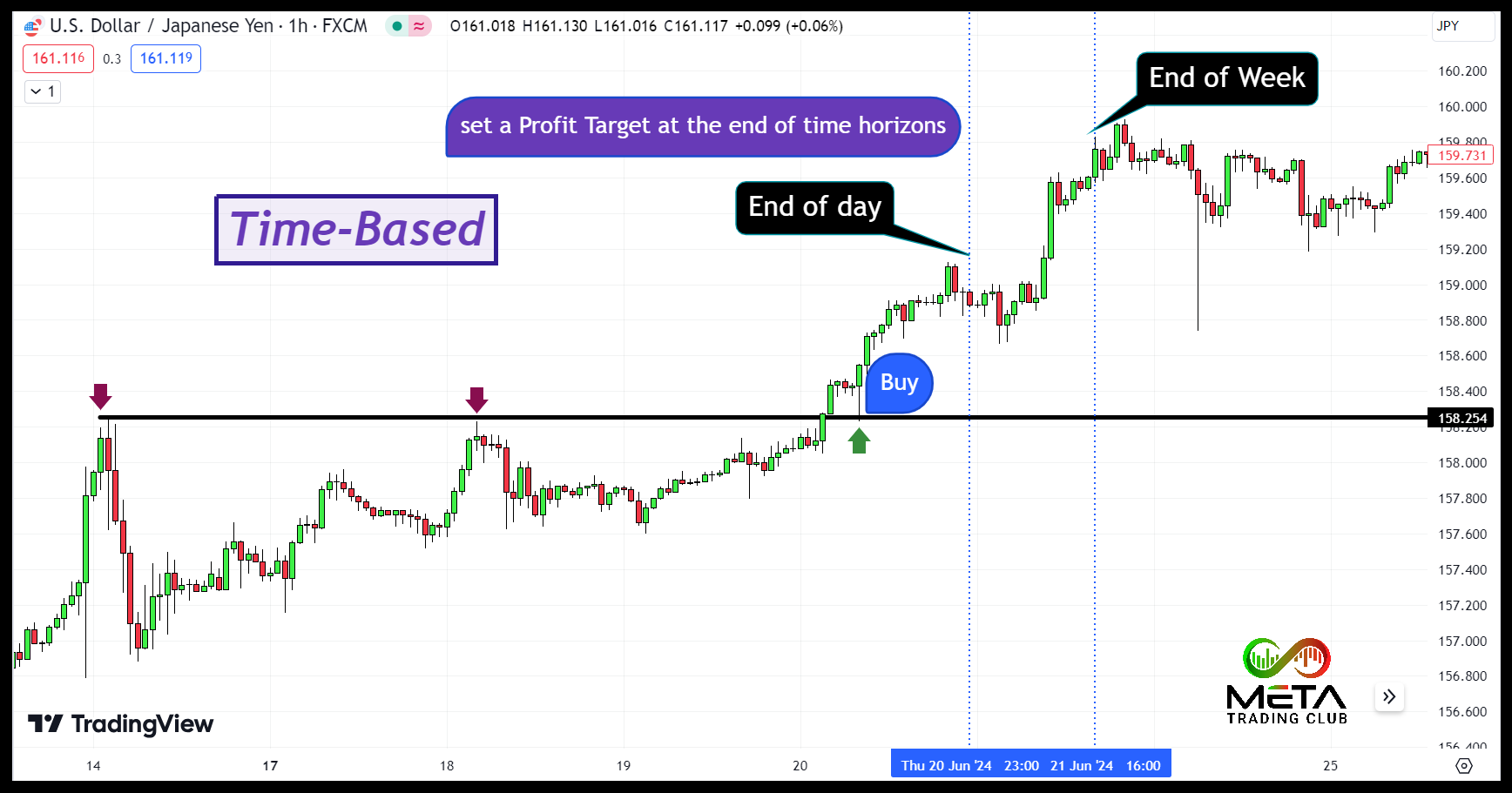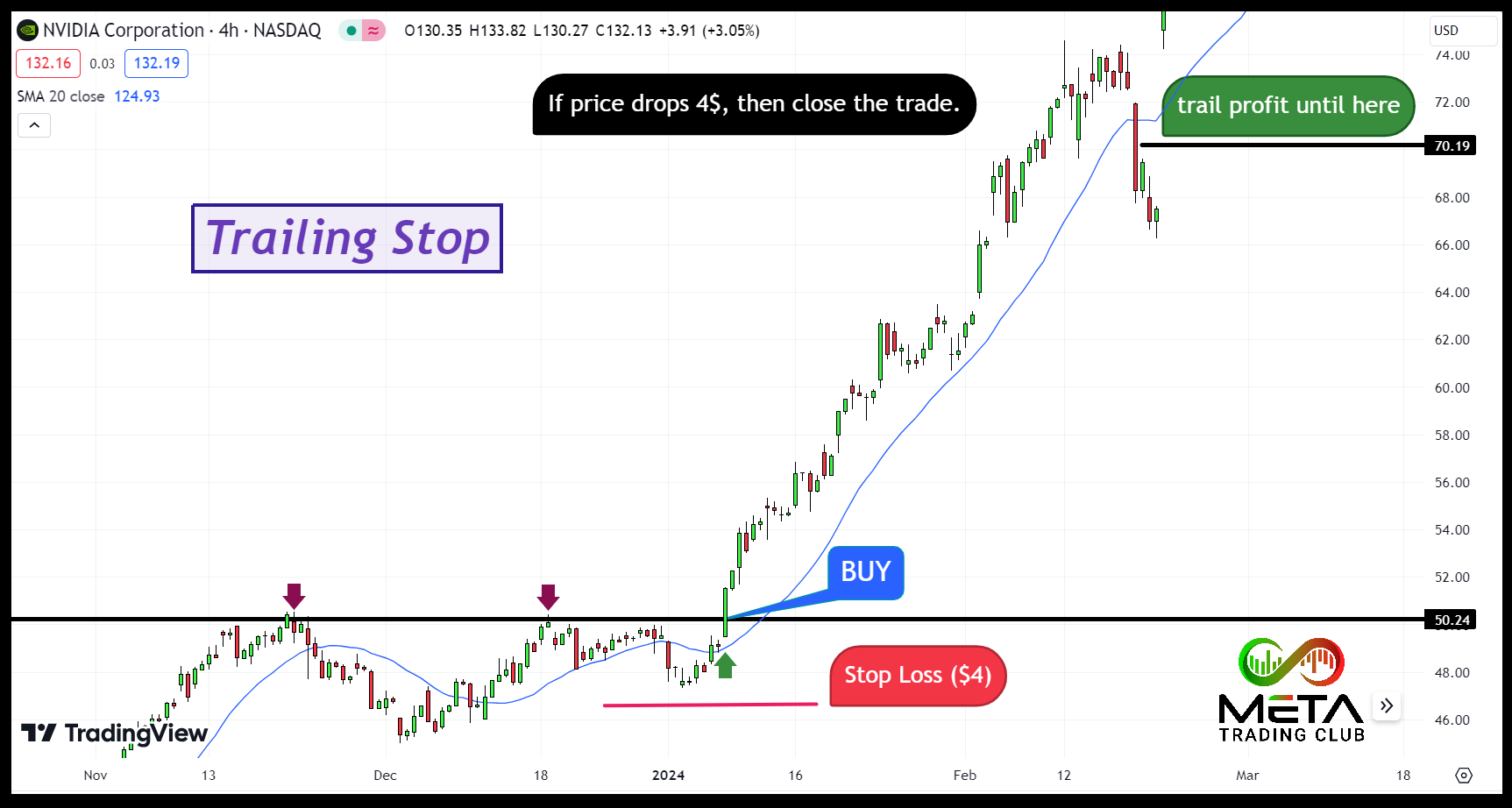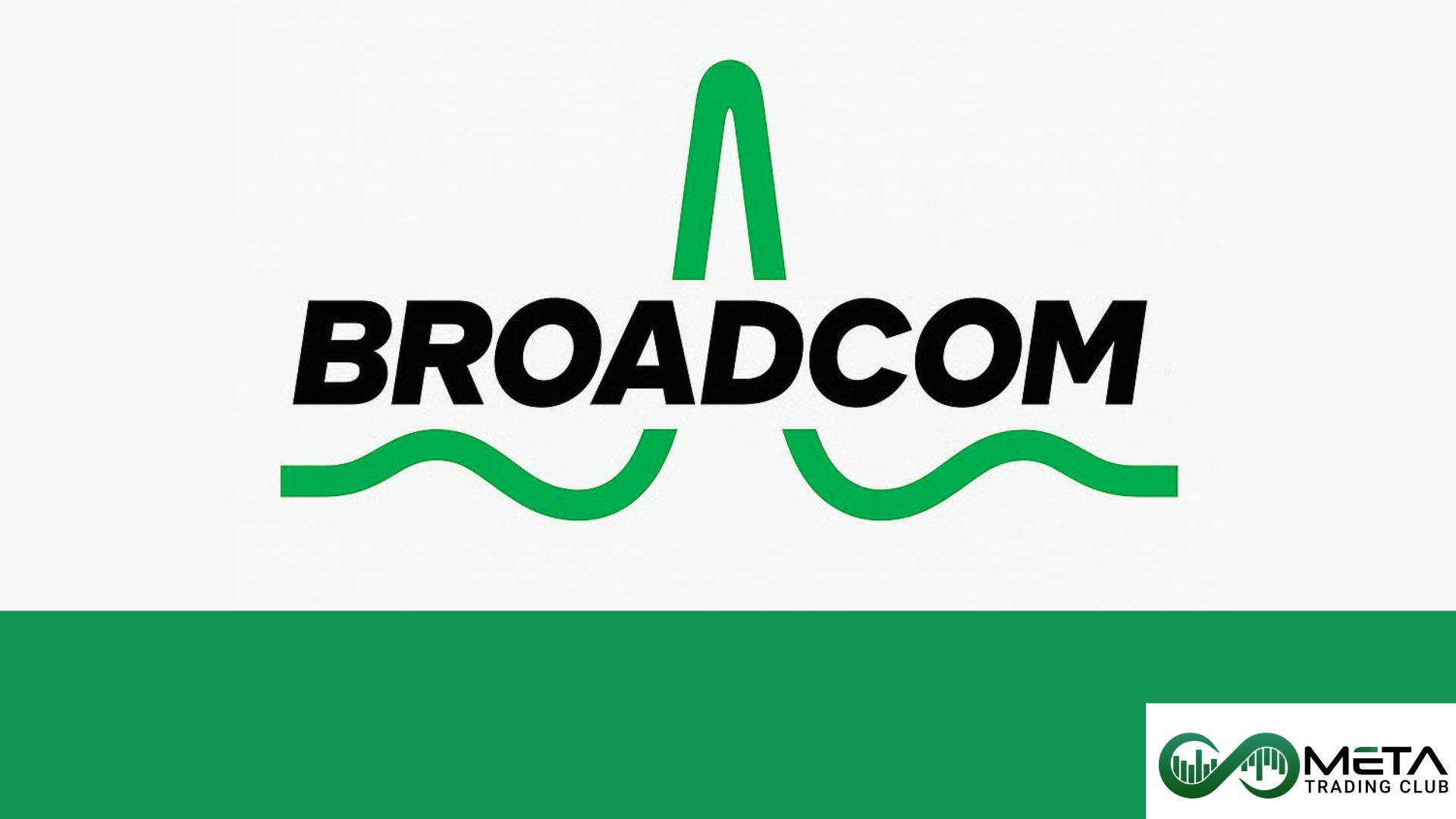In financial markets, profit targets serve as guiding stars for traders and investors. These predetermined exit points not only safeguard gains but also provide a roadmap for disciplined decision-making. Whether you’re a novice trader or not, understanding profit targets is essential. So, let’s explore how they can elevate your trading game. Read on to discover practical strategies and real-market examples that will empower you to set effective profit targets and achieve your financial goals.
Table of Contents
What Is a Profit Target?
A profit target is a predetermined level at which a trader or investor aims to take profits from a trade. It represents the price or percentage gain that the trader wants to achieve before closing their position. For example, if you buy a stock at $50 and set a profit target of $60, you plan to close your trade when the stock reaches that price. Profit targets help traders manage risk and lock in gains.
Most you spend all your time and energy trying to find the best entry. But then once you are in a trade, you are completely lost and don’t know how to handle the trades. This leads to a lack of confidence, impulsive decisions, leaving money on the table by reacting emotionally and just making errors that you (as a trader) will regret later. Knowing how to set targets in trading is very important, but often overlooked.
Why Is Setting a Profit Target Important?
A profit target is one of the ways that we can exit a profitable trade. This is crucial for several reasons:
- Risk management: Profit targets help limit potential losses. By defining exit points, traders protect their capital and avoid holding a losing position indefinitely.
- Discipline: Having clear profit targets enforces discipline. It prevents emotional decision-making and keeps traders focused on their strategy.
- Consistency: Profit targets create a consistent approach. Whether based on technical analysis or percentage gains, consistency leads to better results over time.
- Goal achievement: Profit targets align with financial goals. They guide traders toward achieving specific gains and maintaining a long-term perspective.
- Psychological stability: Profit targets provide a sense of accomplishment. Achieving them boosts confidence and reduces anxiety, allowing traders to stay focused during market fluctuations.
- Avoiding overtrading: Without profit targets, traders might hold positions indefinitely, hoping for larger gains. Clear targets prevent overtrading and help maintain a balanced portfolio.
- Adaptability: Profit targets allow adjustments based on market conditions. If a trade reaches the target quickly, you can lock in profits or adjust the target if trends change.
- Exit strategy: Profit targets serve as a well-defined exit strategy. Just as a pilot needs a destination, traders need a target to navigate their trades effectively.
Profit Targets Strategies
A trader that has a precise strategy for their targets can trade with more confidence by eliminating guesswork. In this part, we explain the seven best techniques on how to set targets the right way.
Fixed Reward to Risk Ratio
The fixed reward:risk ratio is a critical concept in trading. It quantifies the potential profit relative to the risk taken in a trade. Assume you’re evaluating a trade with a stop loss (maximum acceptable loss) and a take profit (desired profit level). The ratio is expressed as a fraction or in the format m:1, where m represents the potential reward relative to the risk. For example, if you have a $50 stop loss and your take profit is $100, the ratio is 2:1.
A 2:1 ratio means that for every dollar you risk, you aim to make two dollars in profit. It ensures that your potential reward justifies the risk undertaken.
Consider that the transaction costs (spreads, fees) may slightly reduce the actual profit. Also, traders often use this ratio to assess trade viability before entering a position.
For example, you have a 2:1 reward to risk ratio and want to buy S&P 500 at 5238. You choose your stop loss at 5208, then you should set a profit target at 5298. (You have 30 stop loss and 60 profit targets)
Recent Support and Resistance Levels
Support levels are horizontal lines where an asset’s price tends to stop falling and rebound. These levels are established at historical price points where the asset has previously reversed its downtrend. Also, supports reflect increased buying pressure overcoming selling pressure. furthermore, price tends to bounce off support levels, signaling potential upward movement. If they break, a former support level may become a future resistance level.
Resistance levels prevent an asset’s price from rising further due to selling pressure. Also, price tends to encounter selling pressure near resistance levels. These levels reflect increased selling pressure overcoming buying pressure.
For example, we buy EUR/USD when the price breaks the current resistance (1.07535) and we set a profit target at the last resistance level (1.08854).
Pattern Projection
Pattern projection is a technique used in trading to estimate potential price movements based on specific chart patterns. You can identify chart patterns (like Head and Shoulders, Cup and Handle, Rectangles) and measure their height (distance) from the lowest to the highest point. Once the pattern completes and breaks out, they project this measured distance from the breakout level. So, the projected distance serves as a profit target for the trade.
For example, if an inverse head and shoulders pattern has a height of 20 points, the profit target would be 20 points above the breakout level. In the image below, we buy a Tesla share when the price breaks the neckline ($194) and the pattern’s height is $62. So, we set our profit target at $256 (194+62).
Moving Average
A moving average is a widely used trading indicator that smoothes price action by calculating the average price (usually the closing price) over a specified lookback period.
Traders plot the moving average on a chart to visually assess trend direction and strength. The most common settings include the 5, 10, 20, 50, 100, and 200-bar moving averages.
The 200-day moving average is particularly popular for gauging long-term trends in equity markets. You can use moving averages as profit targets. When price rallies back to a key overhead moving average, it becomes a potential profit-taking level.
For example, when the gold price breaks the resistance at $2302, we buy XAU/USD. In this case, we do not set a rigid profit target, we chase the price. While the price is above the moving average, that’s alright but when the gold price crosses the moving average, we close our trade.
Fibonacci Levels
Fibonacci Levels play a significant role in determining profit targets and estimating potential price movements. You use Fibonacci extensions to establish profit targets or estimate how far a price may travel after a pullback. These levels are based on Fibonacci ratios and are drawn as connections between significant points on a chart. In an uptrend, profit-taking often occurs at Fibonacci Price Extension Levels. you can identify these levels by:
- Clicking on an important low in the swing.
- Dragging the cursor to the most recent high of the swing.
- Clicking on any of the retracement levels.
Key extension levels include 0.5, 0.618, 1, 1.618. These levels act as potential profit-taking points or areas where the price may reverse.
For example, we see a divergence in Apple share, so we wait to see a buying signal in the chart. When the price breaks a resistance at $178, then we buy at the pullback. In this scenario, we can set our profit target at 0.5 Fibonacci zone or 0.618. This strategy usually works for swing traders and long-term investors.
Time-Based
Time-based targets can be combined with other target strategies. Day traders, for example, often use an end-of-day (session) target strategy and they exit all their open positions by the end of the trading day to avoid any overnight risk (swap).
Swing traders often utilize an end of week target strategy to exit all trades on Friday night to avoid the risks that come from holding trades over the weekend and being exposed to gap risk.
Trailing Stops
A trailing stop loss is a type of order that enables the trader to set a maximum dollar amount or percentage drop from the high point of a running position. The order is designed to capture a higher exit price on a position (a long position) every time the price ticks higher. If the price moves in your favor, the ‘trailing’ aspect pushes the stop order higher. Once the security price does fall by the maximum $ or % specified, the position gets stopped-out.
The primary purpose of a trailing stop is to protect gains by allowing a trade to remain open and continue profiting as long as the price moves in the trader’s favor. If the price changes direction by a specified percentage or dollar amount, the trailing stop closes the trade. Unlike fixed stop-loss orders, trailing stops automatically track the stock’s price direction and don’t require manual adjustments.
For example, we buy Nvidia share at $50, and we can tolerate only a $4 drop in price. So, we order a trailing stop of $4 for our trade. As you can see, the price has a bullish trend so by using trailing stop, you can obtain larger profits. Also, you can use the moving average as a trailing stop.
What Does Affected Profit Targets?
There are some factors that can affect profit targets in trading. Let’s explore some of them:
Volatility: Consider the volatility of the market you are trading in. More volatile assets may require wider profit targets and assets with low fluctuations in price need smaller profit targets.
Historical price movements: Analyze past price behavior. If an asset tends to make large moves, adjust your profit targets accordingly (or use trailing profit targets).
Time frame: The duration of your trade matters. Short-term trades might have smaller targets, while long-term trades may allow for larger gains.
Risk appetite: Assess your willingness to take risks. Aggressive traders may set ambitious targets, while conservative traders decide to get more modest gains.
Market analysis: Understand market dynamics. Technical analysis, support/resistance levels, and trend-following strategies guide profit target decisions.
If you want to enhance your trading skills, participate in our 4 weeks incubator program.
Common Mistakes in Setting Up a Profit Target
When setting up a profit target, traders sometimes make common mistakes that can impact their trading success:
Setting Targets Too Low
Being overly conservative with profit targets may lead to missed opportunities. Aim for a balance between achievable gains and risk management. Overly conservative targets may prevent capitalizing on favorable price movements. you might exit prematurely, missing potential gains. Also, extremely low targets lead to poor risk-reward ratios. If the risk of a trade is higher than the potential reward, it’s not a favorable setup. However, constantly achieving small targets can be demotivating. you may feel they’re not making meaningful progress.
Lack of Flexibility
Rigid profit targets without adjustments can be problematic. Market conditions change, so be adaptable and revise targets as needed. However, rigid targets may cause you to miss out on potential gains. If the market moves beyond the initial target, you won’t benefit. Also, market news, economic events, or unexpected price movements can impact trades. A lack of flexibility prevents adapting to new information. Sometimes, it’s better to revise targets. Sticking to an outdated plan can lead to suboptimal results.
Not Monitoring Active Trades
Ignoring active trades can result in missed profit-taking opportunities. Regularly assess your positions and adjust targets if necessary. Moreover, by neglecting active trades, you may fail to capitalize on favorable price movements. You might overlook opportunities to lock in profits or adjust targets based on changing trends. Also, ignoring trades can lead to increased risk exposure. Market dynamics shift, and failing to adapt profit targets accordingly may result in unexpected losses. However, without active monitoring, you may stick to outdated profit targets even when circumstances warrant adjustments.
Final Words
Profit targets play a crucial role in trading and investment strategies. By defining specific exit points, traders can manage risk, maintain discipline, and secure gains. Whether based on technical analysis, percentage gains, or multiple time frames, profit targets provide a roadmap for successful trading. Remember to adapt your targets to market conditions and stay focused on your overall goals.
FAQs
- What is target profit?
This refers to the desired level of profit that an investor or trader aims to achieve in a specific trade. It represents the price or percentage gain at which they plan to exit the position to secure their gains.
- How to determine profit target?
To determine a profit target, consider these methods: percentage-based, support/resistance, Fibonacci levels, based on time and trailing stops.
- What is the profit target setting?
This refers to the process of determining the specific price level or percentage gain at which a trader or investor plans to exit a trade to secure profits. It’s a crucial aspect of risk management and trading discipline. - What is the profit target price?
This is the specific level at which a trader or investor plans to exit a trade to secure profits. It can be a predetermined price point or a percentage gain from the entry price. For example, if you enter a stock at $100, a 10% profit target would be $110. - What is the profit target in forex?
In forex trading, a profit target refers to the price level at which you aim to close a trade and realize a profit. Setting profit targets helps remove emotion from trading and ensures adherence to your trading plan.



